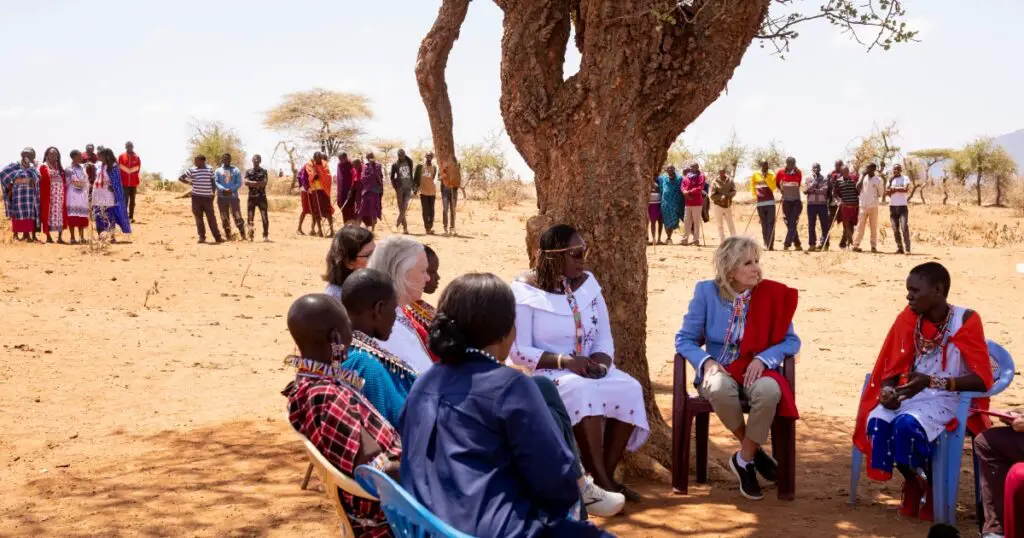- Kenya will receive an additional US$126 million from the U.S. Agency for International Development (USAID) to address the ongoing drought
- USAID said it was providing the funding to address the hunger crisis that has left more than four million people in the grips of a dire hunger crisis
- The announcement comes following a visit to the country by First Lady Jill Biden where she met with drought-affected communities and heard first-hand about the devastating impacts
Kenya will receive an additional US$126 million from the U.S. Agency for International Development (USAID) to address the ongoing drought.
On Tuesday, February 28, 2023, USAID said it was providing the funding to address the hunger crisis that has left more than four million people in the grips of a dire hunger crisis.
According to USAID, the number is expected to rise to over five million by June 2023.
The announcement comes following a visit to the country by First Lady Jill Biden where she met with drought-affected communities and heard first-hand about the devastating impacts.
After a fifth failed rainy season in the Horn of Africa, cumulative rainfall in Kenya is now less than 70% of the 30-year average across most of the country – exacerbating humanitarian needs.
Communities in the arid and semi–arid land counties of Kenya are experiencing the worst effects of the drought, as farmers are losing crops and millions of livestock, and increasingly scarce resources, such as water, food, and pasture, are driving intercommunal tensions and violence.
The funding in food assistance will allow USAID partners to meet the urgent needs of approximately 1.3 million people across Kenya.
Kenyans facing hunger to receive maize, sorghum
USAID will provide emergency food items such as sorghum, maize, yellow split peas, and vegetable oil for families living in areas where local markets are not functioning.
Additionally, in areas where markets are functioning, partners will provide cash-based assistance for families to purchase food staples, which will, in turn, support local economies.
USAID said it would also support programs to prevent and treat child malnutrition, as more than 970,000 children ages five and younger are acutely malnourished across the country.
“Given the magnitude of the current crisis, however, more funding will be required to meet expected humanitarian needs through 2023. USAID has acted early and aggressively in responding to the drought in Kenya, providing nearly $310 million in humanitarian assistance in Fiscal Year 2022 alone – the greatest share of all donor funding to date,” USAID said.
“Yet, the drought response across the Horn of Africa remains underfunded by the broader international community and needs only continue to grow. Ultimately, the United States cannot solve this crisis alone, which is why we urgently call on all donors to step up again and provide immediate, generous assistance to help alleviate the suffering of millions of people across the Horn of Africa who face the threat of starvation in this historic drought.”
Government forms taskforce to address drought
In a related story, the National Steering Committee on drought response recently said that they had received over KSh 592 million, a week after the creation of the drought mitigation appeal fund in December 2022.
Operating under the name ‘Wakenya Tulindane’, the campaign was launched to address the effects of drought through both short-term and long-term measures.
At the time, the institutions that had donated towards the campaign included Co-operative Bank who had contributed KSh 150 million, Kenya Defense Forces KSh 130 million, Equity Bank KSh 120 million and KCB KSh 100
million.
Other corporates that boosted the kitty were Safaricom with a KSh 50 million donation and Diamond Trust Bank with KSh 20 million.
Five sub-committees were also formed to ensure transparent collection and disbursement of funds and to develop long-term sustainable solutions against the perennial effects of drought.
The sub-committees include Finance and Governance, Communications and Awareness, Resource Mobilisation, Procurement, Logistics and Operations and Sustainability.
The sustainability team has been tasked with driving the medium-term to long-term solutions to tackle climate change effects on the country.
